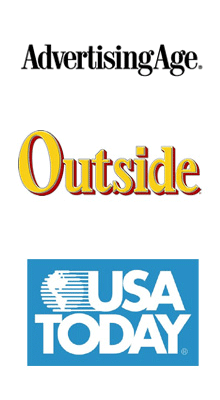
Enough! Enough with all the new twords!
The Good, Bad & Ugly of Twares – Sweet Lincoln’s mullet. Before we go much further, can we put out an official call to the travel industry to stop making up words. Forget society in general, let’s just start with travel. Really, United, Twares? (Twitter + Fares = Twares) Please, Twitter is confusing enough to explain to @oprah, let alone with new Twords popping up all the time.
However, kudos to United for launching the aforementioned (we are not using the word) Twitter fares promotion on Twitter. As we spoke about earlier in the week (How the Travel Industry Should Use Twitter), how can organizations take advantage of the infrastructure that Twitter has created?
A perfect comparison is the Southwest Ding Desktop app…granted, that was created several years ago, before the miracle that is Twitter came into being…instead of creating an app, promoting it and trying to build an audience for the app via advertising, United used Twitter and it’s community, reach, etc. to essentially run a similar promo. In this case, with less investment (see $0), less advertising and less risk. A brilliant use of an existing technology…instead of reinventing the wheel.
http://www.united.com/
Women Heart Blogs – A helpful study on how women use blogs.
From the article:
According to The 2009 Women in Social Media Study by BlogHer, iVillage and Compass Partners, 64% of women are nearly twice as likely to use blogs than social networking sites as a source of information, 43% for advice and recommendations and 55% for opinion-sharing, while they 75% are 50 percent more likely to turn to social networking sites as a means of keeping in touch with friends and family.
Of the 42 million women engaged in social media weekly:
- 55% of women participate in some form of blogging activity
- 75% participate in social networks such as Facebook or MySpace
- 20% use Twitter
- 45% of survey respondents decided to purchase an item after reading about it on a blog
There’s More to Maine – From our friends in the far northeast, a new campaign from Visit Maine. Typically, we don’t cover traditional campaign launches, but the connection between the print and website, visitmaine.com, is quite refined. Clean, uncluttered and showing the best of Maine…well, I assume the best of Maine, never been there…the homepage is a nice example of directing visitors to the key sections of the site. The primary callouts acknowledge what the traveling public is looking for in a Maine vacation…Summertime, Cusine (lobster), Lighthouses and Fishing…honestly, what else is there? Give the visitor what they want and Maine does.
http://www.visitmaine.com/
Banner Ads Are Relevant! – Interesting research that shows the display ad is not quite dead after all.
From the article:
When Internet users were surveyed to find out what actions they took when viewing a display ad on an ad-supported Website, nearly one-third said they clicked on the ad.
South Carolina v. Columbus – From the blog Mengel Musings, a social media smackdown between two friends of the Travel 2.0 blog, South Carolina and Columbus (OH). The post evaluates the Twitter, Facebook, website and other social media marketing tactics used by the DMO and CVB. Overall, a nice outsider perspective on the travel industry’s crusade into social media marketing.
From the article:
I’m comparing how two cities are using social media from a travel and tourism perspective. Both have their namesake from Genoa’s most famous navigator and both are home to college football teams I love to hate. Let’s see how Columbus, Ohio and Columbia, South Carolina are cultivating relationships with fans through social media.
If you want to skip right to the finish (spoiler alert!) Columbus wins on an anti-Steve Spurrier technicality.
http://www.amymengel.com/


























